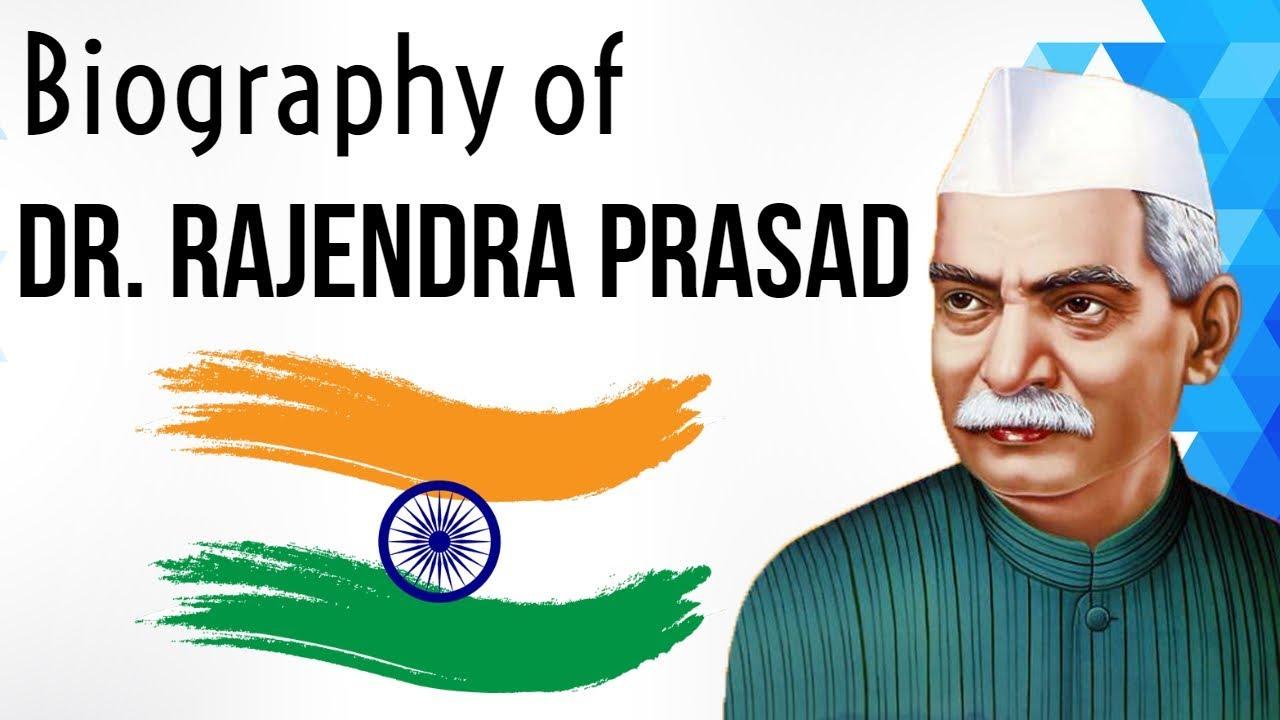Table of Contents
CHILDHOOD
- Rajendra Prasad was born on 3rd December, 1884, in Zeradai in Siwan district of Bihar. His father, Mahadev Sahai, was a scholar of both the Sanskrit and the Persian language.
- His mother, Kamleshwari Devi, was a devout woman who would tell stories from the Ramayana to her son . He was the youngest child and had one elder brother and three elder sisters.
- His mother died when he was a child and his elder sister took care of him2. At the age of 5, he was placed under the guidance of a Moulavi to learn Persian, Hindi and arithmetic.
CHILDHOOD
- After the completion of traditional elementary education, he was sent to the Chapra District School. Meanwhile, in June 1896, at an early age of 12, he was married to Rajavanshi Devi.
- He, along with his elder brother Mahendra Prasad, then went to study at T.K. Ghosh’s Academy in Patna for a period of two years. He secured first in the entrance examination to the University of Calcutta and was awarded Rs. 30 per month as a scholarship.
EDUCATION
- Prasad joined the Presidency College, Calcutta in 1902, initially as a science student. He passed the under the University of Calcutta in March 1904 and then graduated with first division from there in March 1905.
- Impressed by his intellect, an examiner once commented on his answer sheet that “examinee knows better than examiner”. Later he decided to focus on the study of arts and did his M.A. in Economics with first division from the University of Calcutta in December 1907.
EDUCATION
- There he lived with his brother in the Eden Hindu Hostel. A devoted student as well as a public activist, he was an active member of The Dawn Society.
- It was due to his sense of duty towards his family and education that he refused to join Servants of India Society. Prasad was instrumental in the formation of the Bihari Students Conference in 1906 in the hall of the Patna College.
THE RISING
- Rajendra Prasad served in various educational institutions as a teacher. After completing his M.A in economics, he became a professor of English at the Langat Singh College of Muzaffarpur in Bihar and went on to become the principal.
- However, later on he left the college for his legal studies and entered into the Ripon College, Calcutta (Presently Surendranath Law College).
- In 1909, while pursuing his law studies in Kolkata he also worked as Professor of Economics at Calcutta City College. In 1915, Prasad appeared in the examination of Masters in Law, passed the examination and won a gold medal. He completed his Doctorate in Law from Allahabad University in 1937.
- In the year 1916, he joined the High Court of Bihar and Odisha. Later in the year 1917, he was appointed as one of the first members of the Senate and Syndicate of the Patna University. He also used to practice law at Bhagalpur, the famous silk-town of Bihar.
MOVEMENT
- Prasad’s first association with Indian National Congress was during 1906 annual session organised in Calcutta, where he participated as a volunteer, while studying in Calcutta.
- Formally, he joined the Indian National Congress in the year 1911, when the annual session was again held in Calcutta. During the Lucknow Session of Indian National Congress held in 1916, he met Mahatma Gandhi.
- During one of the fact-finding missions at Champaran, Mahatma Gandhi asked him to come with his volunteers. He was so greatly moved by the dedication, courage, and conviction of Mahatma Gandhi that as soon as the motion of Non-Cooperation was passed by Indian National Congress in 1920, he retired his lucrative career of lawyer as well as his duties in the university to aid the movement.
POLITICS
- He also responded to the call by Gandhi to boycott Western educational establishments by asking his son, Mrityunjaya Prasad, to drop out of his studies and enrol himself in Bihar Vidyapeeth, an institution he along with his colleagues founded on the traditional Indian model.
- He took an active role in helping the affected people during the 1914 floods that struck Bihar and Bengal. When an earthquake affected Bihar on 15 January 1934, Prasad was in jail.
- He was released two days later and set up Bihar Central Relief Committee on 17 January 1934, and took the task of raising funds to help the people himself.
- He was elected as the President of the Indian National Congress during the Bombay session in October 1934. He again became the president when Netaji Subhash Chandra Bose resigned in 1939.
FIRST PRESIDENT OF INDIAN REPUBLIC
- He was elected the President of Constituent Assembly on 11 December 1946. Two and a half years after independence, on 26 January 1950, the Constitution of independent India was ratified and Prasad was elected the nation’s first president.
- He travelled the world extensively as an ambassador of India, building diplomatic rapport with foreign nations. He was re-elected for 2 consecutive terms in 1952 and 1957.
- In 1962, after serving twelve years as the president, he announced his decision to retire. After relinquishing the office of the President of India on May 1962, he returned to Patna on 14 May 1962 and preferred to stay in the campus of Bihar Vidyapeeth.
- He was subsequently awarded the Bharat Ratna.He died on 28 February 1963. Rajendra Smriti Sangrahalaya in Patna is dedicated to him
DEATH
- In 1960, he suffered a heart attack. He was treated by top doctors in India, including his friend Dr Bidhan Chandra Roy, the then Chief Minister of West Bengal.
- His health started deteriorating and he died on 7 March 1961 at the age of 74, from a cerebral stroke. At that time he was still in office as the Home Minister of India.

























 WhatsApp
WhatsApp